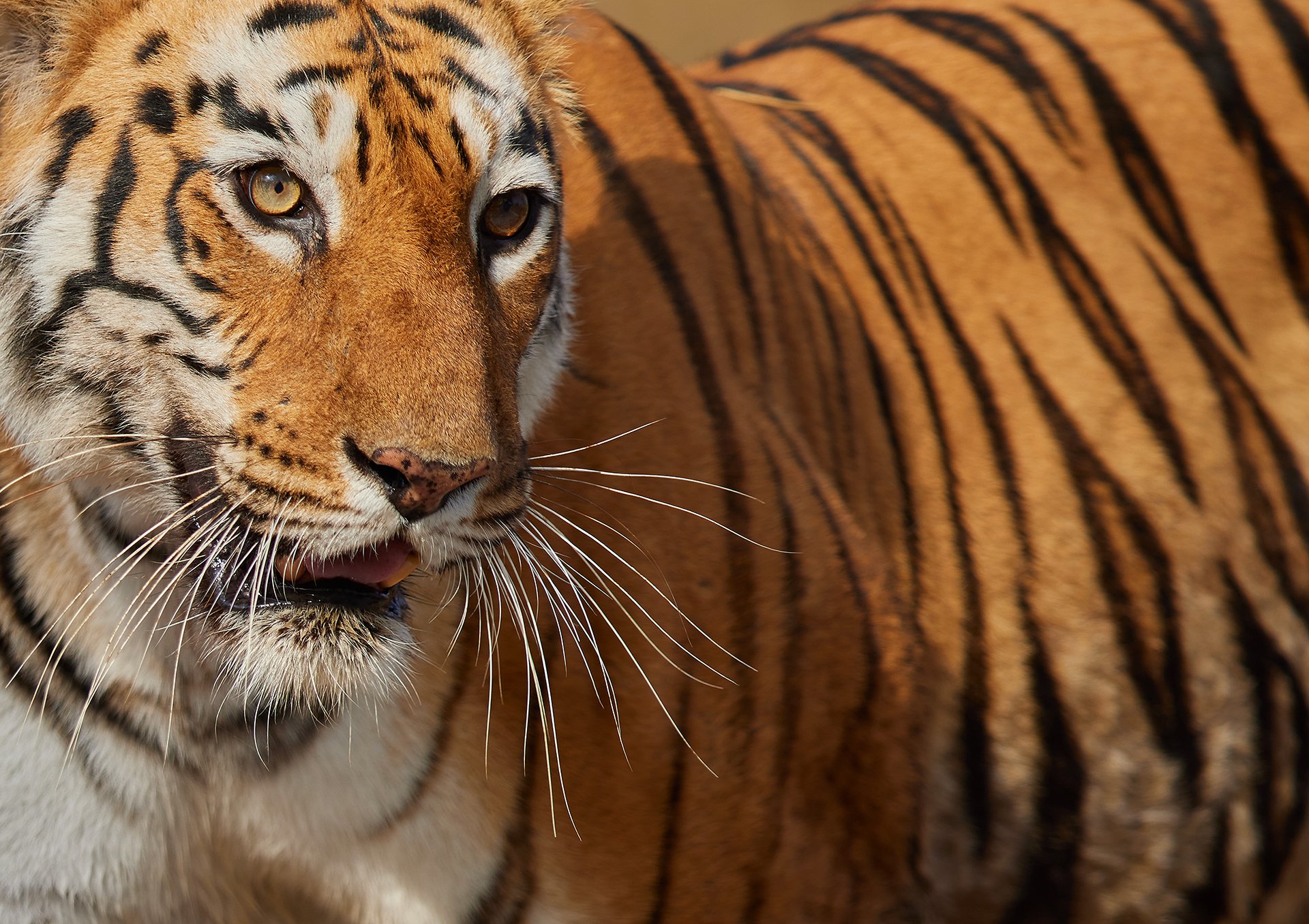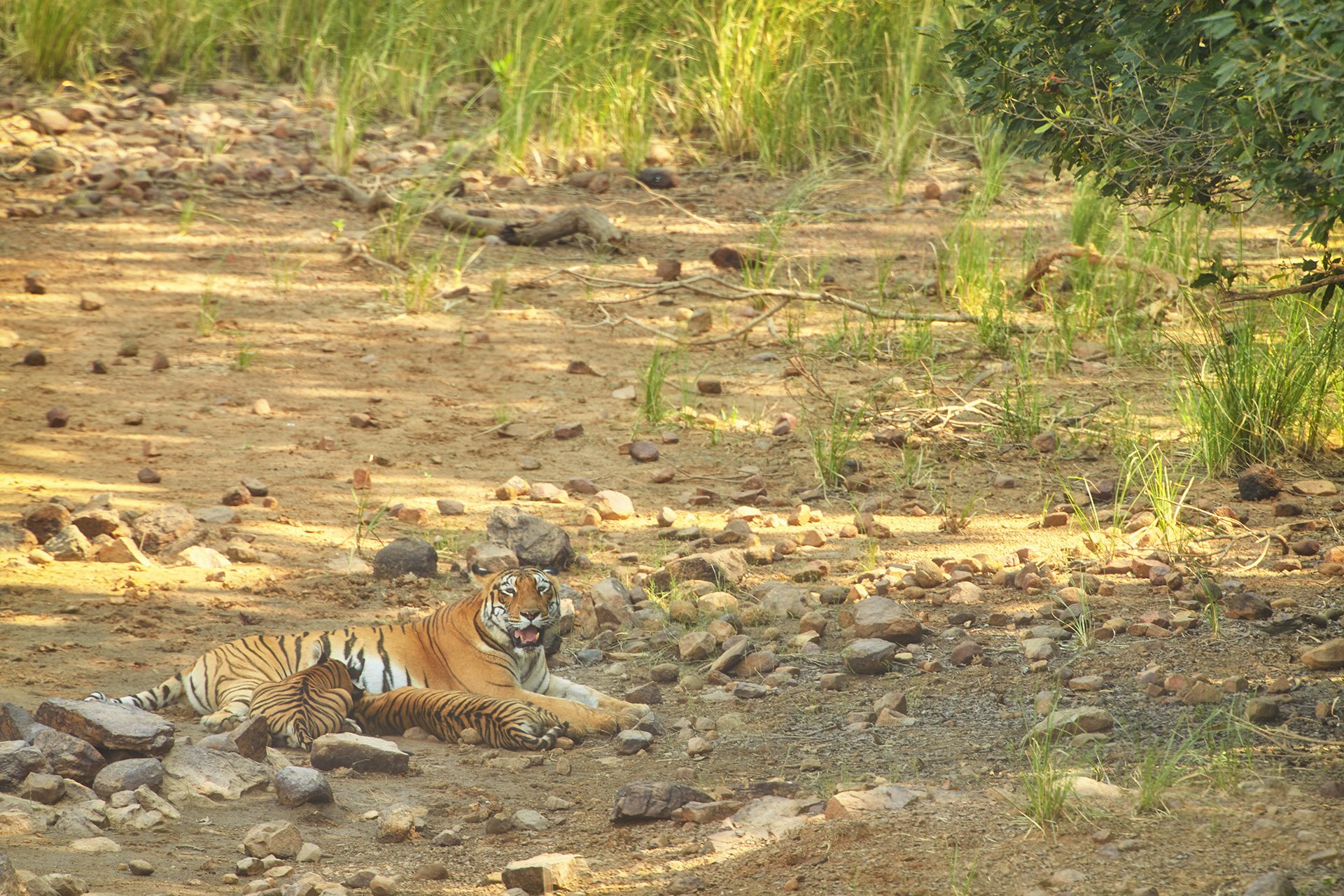Introduction.
These images of Wild Bengal Tigers were captured by Wildlife Photographer Tal Chohan. Tal has a passion to help conserve the Tiger for the benefit, enjoyment and education of future generations. Tigers, being on top of the food chain, are an umbrella species, meaning if we protect the tiger, we must also protect their habitat as well as all the other animals that exist in their shadow. This ultimately means by conserving the tiger, we are ensuring the future health of the planet for ourselves. Tiger numbers have been decimated, putting them on the brink. Threats include deforestation, poaching, human-animal conflict and emerging diseases such as canine distemper virus. These images were taken over the last ten years at Tadoba Andhari Tiger Reserve, India. Tal hopes to capture the true essence, and beauty and spirit of the Tiger through his lens in the hope to connect viewers to arguably the most charismatic of megafauna we have left.
We can all help tigers by educating ourselves and donating to charities such as Wild Cats Conservation Alliance - https://conservewildcats.org/
Some more of Tal’s work, including his short Tiger documentary can be found at www.tcwildlifephotography.com
Image 1
‘Babbli’
This is a Tigress known as ‘Babli’ who has a territory in the north of the reserve. It was a beautiful morning and it too a lot of skill from our forestry guides to track her. We were fortunate to see her emerging through the bamboo forest and into a small sun-lit patch of forest. This image demonstrates the typical size a Bengal tiger can reach, being 90-120cm at the shoulder.
Image 2
Maya T12
Tigers in India are given arbitrary T -Number by the forestry commission, with local guides giving a few some names. Maya is the star tigress of Tadoba Andhari Tiger reserve, India. A very bold and beautiful tigress that has controlled a prime prey filled territory for a number of years. Due to her popularity, it is estimated that alone she brings in around £1 million worth of revenue to the park, which helps to protect the wildlife, relocate villages within the park, expand the park, create corridors to other parks and create jobs for local villagers who in turn protect the forest.
Image 3
Maya and Meera
Maya in Hindi translates to ‘illusion’. However she is anything but an illusion, being a very bold cat, she regularly brings her cubs out in front of stunned safari-goers. Here, Maya was teaching her cub to hunt, by indulging in a game of ‘tig and tag’ (pun intended!). Cubs learn from their mother before moving on to find their own territories. Females typically occupy a home range of around 20 square km.
Image 4
Matkasur
This huge male was once the dominant force of Tadoba Tiger Reserve, occupying a territory of around 100 square kilometres, and on this day in August 2016, where the temperature reached nearly 50 degrees Celsius, and the terrain was very dry. We observed him walking on the jungle tracks to patrol and mark his territory. Tigers like to walk on the sandy roads created by forestry and tourist jeeps as they are kinder to their soft paw pads. It is also a dominant behaviour trait being out in the open.
Image 5
Junabai and her fans
By contrast to the previous image, this image was taken after the monsoon season, and we can see that the forest completely regenerates into a lush green jungle. We can see a typical tourist eyes view, with jeeps and tigers. Ethical and sustainable tourism plays an important role in protecting the tiger, by warding off poachers, and providing an income for the park and villages that surround the tiger reserves. To see a Tiger in the wild is indescribable.
Image 6
Chota Matka
If Maya is the queen of Tadoba, then surely Chota Matka is the king. A huge beautiful blue eyed male tiger that loves spending time in water. In summer seasons when the temperature can exceed 40 degrees tigers are often found in water during the heat of the day. Their discomfort in extreme heat may suggests tigers may have evolved in colder climates such as Siberia, and there is fossil evidence to back this.
Image 7
Chota Matka Scars
Life in the wild is not easy, and male tigers need to establish and guard territories that house plenty of prey, water and breeding females. We came across Chota Matka in May 2022 and discovered huge scars, as well as having a portion of his lip being ripped out by a rival male.
Image 8
Choti Tara and cubs
This mother is known as Choti Tara, which translates to ‘Little Star’. Tigresses typically litter around three cubs, but more have been documented. The mothers keep the cubs under cover and occasionally move them to a new den site should they detect any danger. However on this day the cubs were out in the open for twenty minutes, playing with sticks and stones as well as jumping on mums back while she was trying to rest. Eventually they settled down for a feed, and a long cat-nap!
Image 9
Wagdoh (Scarface male), Sharmili and cub
Nature is seldom an exact science. We have typically thought that tigers are solitary and play no part in the upbringing of cubs, but this huge male was an exception. Scarface or Wagdoh was known to spend time with his cubs throughout his reign, and here he is seen with a Tigress known as Sharmili (meaning shy in Hindi). She was only comfortable coming out in the open in the presence of Scarface.
Image 10
Choti Tara on the hunt
Here we can see the beautiful ear spots of Choti Tara, as she watch’s a stag in the distance. The ear spots are used to communicate to cubs, and also act as a deterrent to animals that may prey on cubs. There is a video sequence of her stalking the stag, and in that we can see how tigers can disappear using their camouflage. The video link is at the end.
Image 11
Sonam and the purpose of the tiger.
Here we have tigress Sonam, walking along the banks of Telia lake, with her beautiful markings. If we protect the tiger, we protect the forests, which act as water sheds, delivering water to the poorest of the poor. Conservation of the tiger isn’t just about tigers, it’s about the conservation of all other species they share the forest with, the forests themselves and ultimately as a result, ourselves.
When I saw this scene unfolding, I saw the value in creating this photograph, as the tigers stripes are mirrored by the trees in the lake, connecting the tiger, the forest and water.
Concluding comments from Tal Chohan
Good zoos such as Shepreth Wildlife Park, play a vital role in terms of raising awareness of the plight of the tiger, providing education and interactive experiences with the big cat. We can all play our part too by living sustainably, visiting tigers at good zoos and perhaps even going to see them in the wild. Conservation groups such as wildcats conservation alliance play a huge role in monitoring populations, providing training to rangers and helping to fund anti-poaching patrols in areas where tigers are on the brink. Please do visit their website and donate.
https://conservewildcats.org/
A short documentary video is below.











